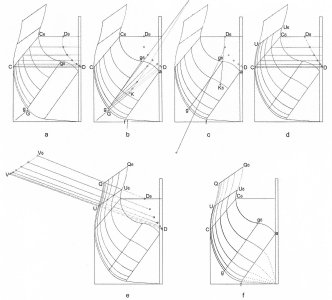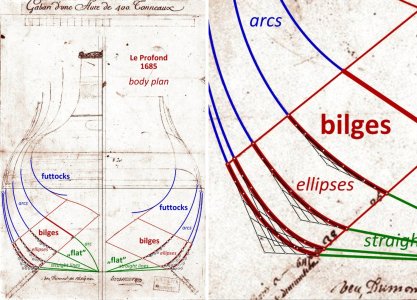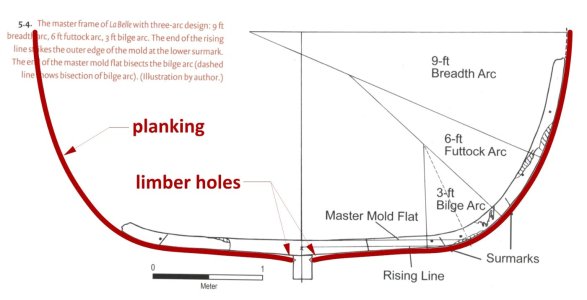.
For readers who do not realise how much is at stake in this whole “game”, I would like to clarify that the general conclusions expressed in the above post, and resulting from the analysis of source materials, incidentally much ignored or not investigated properly so far, imply, to a large extent, the annihilation of the existing perception of the evolution of early modern naval architecture, expressed in perhaps thousands of works, and for many decades by generations of scholars and less ‘official’ authors as well.
For those better versed in the subject, it will be shown below, using the example of the French transport ship La Belle 1684 (or rather its equivalent – the fluit Le Profond 1685, designed according to the same principles), how the hitherto desperate lack of recognition in general and, in particular, of defining the ‘’omnipresent‘’ after all, North Continental/Dutch method, has negatively affected the conceptual interpretation of this wreck in an otherwise valuable monograph published by Texas University Press in 2017 (La Belle. The Archaeology of a Seventeenth-Century Ship of New World Colonization), and in an equally valuable monograph on this ship published by Ancre in 2000 (Cavelier de La Salle. L'Expédition de 1684. La Belle).
In the first of these publications, the process of generating the frame contours is presented as follows (concept and illustration by Taras Pevny):
In the above interpretation, the most important part of the hull – the „flat”, is left unexplained or undefined at all. The bilge curves are depicted as arcs of a circle, as geometrical continuation of the futtock sweeps, and the resulting inconsistency with the actual contours of the wreck's frames was simply justified by some contrived anomalies. And then it stops. In the second publication mentioned, the process is presented in a perhaps even less satisfactory manner.
Edit: Not only that — the alternative interpretation of this shipwreck (by another co-author of the monograph by Texas University Press), sporting identified design diagonals, as representative of the classical Mediterranean method of ship design, is already a complete misunderstanding.
In reality, it is precisely another developmental variation of the North Continental/Dutch method, but already using design diagonals, just entering into common use in ship design. One of these two diagonals, the lower one, replaces the hitherto traditional line of the ‘flat’ , and the other diagonal, the upper one, is in a sense the equivalent of the ‘boeisel’ line (though not quite), anyway used to form futtock sweeps. In this particular design sub-variant, as in any other in the North Continental/Dutch method, it is the ‘flat’ which is formed first, and only then it is connected to the futtock sweeps, in this case necessarily via elliptical curves, as shown in the diagram below.
.
Last edited:









